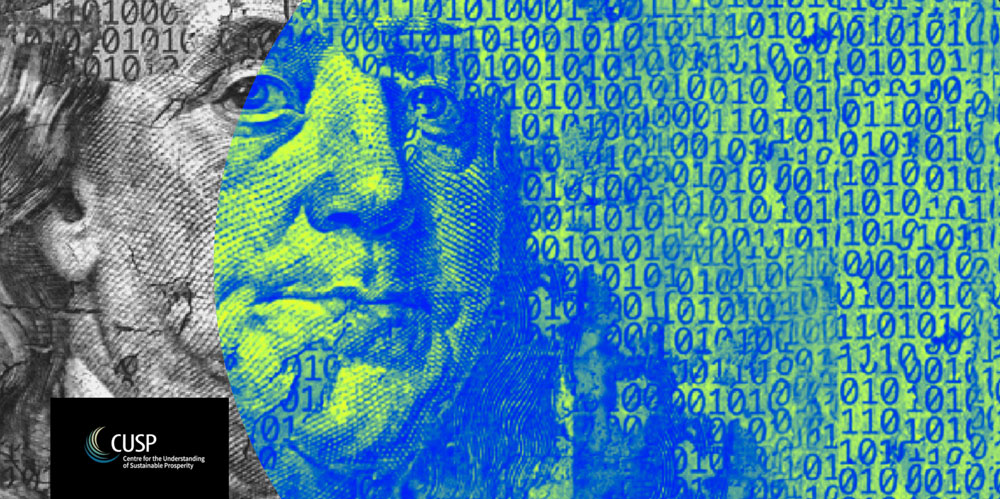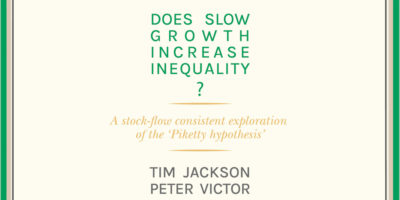Does credit create a growth imperative? A quasi-stationary economy with interest-bearing debt
Journal Paper by Tim Jackson and Peter Victor, outlining the Financial Assets and Liabilities in a Stock-Flow consistent framework (FALSTAFF)
Ecological Economics, Vol 120 | December 2015

This paper addresses the question of whether a capitalist economy can ever sustain a ‘stationary’ (or non-growing) state, or whether, as often claimed, capitalism has an inherent ‘growth imperative’ arising from the charging of interest on debt. We outline the development of a dedicated system dynamics macro-economic model for describing Financial Assets and Liabilities in a Stock-Flow consistent Framework (FALSTAFF) and use this model to explore the potential for stationary state outcomes in an economy with balanced trade, credit creation by banks, and private equity. Contrary to claims in the literature, we find that neither credit creation nor the charging of interest on debt creates a ‘growth imperative’ in and of themselves. This finding remains true even when capital adequacy and liquidity requirements are imposed on banks. We test the robustness of our results in the face of random variations and one-off shocks. We show further that it is possible to move from a growth path towards a stationary state without either crashing the economy or dismantling the system. Nonetheless, there remain several good reasons to support the reform of the monetary system. Our model also supports critiques of austerity and underlines the value of countercyclical spending by government.
Run FALSTAFF
Interested readers can explore the implications for themselves in the online beta version of FALSTAFF on the ISEE systems website.
The article is available via the Science Direct website. If you have difficulties accessing the paper, please get in touch: info@cusp.ac.uk.
Citation
Jackson, T and P Victor 2015. Does credit create a growth imperative? A quasi-steady state economy with interest-bearing debt. Ecological Economics, Vol 120, pp. 32–48.



